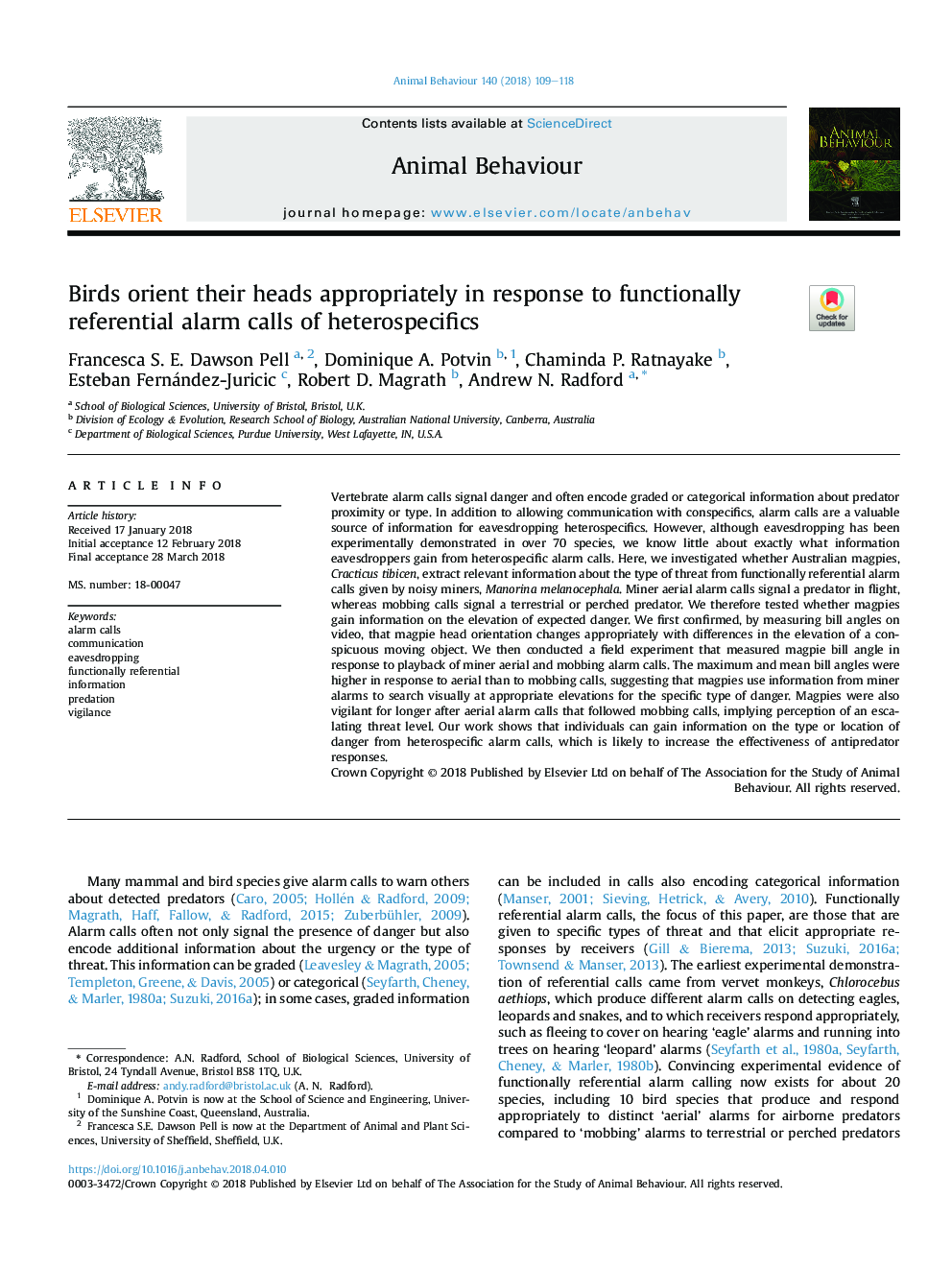| Article ID | Journal | Published Year | Pages | File Type |
|---|---|---|---|---|
| 8488526 | Animal Behaviour | 2018 | 10 Pages |
Abstract
Vertebrate alarm calls signal danger and often encode graded or categorical information about predator proximity or type. In addition to allowing communication with conspecifics, alarm calls are a valuable source of information for eavesdropping heterospecifics. However, although eavesdropping has been experimentally demonstrated in over 70 species, we know little about exactly what information eavesdroppers gain from heterospecific alarm calls. Here, we investigated whether Australian magpies, Cracticus tibicen, extract relevant information about the type of threat from functionally referential alarm calls given by noisy miners, Manorina melanocephala. Miner aerial alarm calls signal a predator in flight, whereas mobbing calls signal a terrestrial or perched predator. We therefore tested whether magpies gain information on the elevation of expected danger. We first confirmed, by measuring bill angles on video, that magpie head orientation changes appropriately with differences in the elevation of a conspicuous moving object. We then conducted a field experiment that measured magpie bill angle in response to playback of miner aerial and mobbing alarm calls. The maximum and mean bill angles were higher in response to aerial than to mobbing calls, suggesting that magpies use information from miner alarms to search visually at appropriate elevations for the specific type of danger. Magpies were also vigilant for longer after aerial alarm calls that followed mobbing calls, implying perception of an escalating threat level. Our work shows that individuals can gain information on the type or location of danger from heterospecific alarm calls, which is likely to increase the effectiveness of antipredator responses.
Related Topics
Life Sciences
Agricultural and Biological Sciences
Animal Science and Zoology
Authors
Francesca S.E. Dawson Pell, Dominique A. Potvin, Chaminda P. Ratnayake, Esteban Fernández-Juricic, Robert D. Magrath, Andrew N. Radford,
